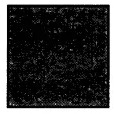Advertisements
Advertisements
प्रश्न
Using Euler’s formula, find the unknown.
| Faces | ? | 5 | 20 |
| Vertices | 6 | ? | 12 |
| Edges | 12 | 9 | ? |
उत्तर
By Euler’s formula, we have
F + V − E = 2
(i) F + 6 − 12 = 2
F − 6 = 2
F = 8
(ii) 5 + V − 9 = 2
V − 4 = 2
V = 6
(iii) 20 + 12 − E = 2
32 − E = 2
E = 30
Thus, the table can be completed as
| Faces | 8 | 5 | 20 |
| Vertices | 6 | 6 | 12 |
| Edges | 12 | 9 | 30 |
APPEARS IN
संबंधित प्रश्न
Is it possible to have a polyhedron with any given number of faces? (Hint: Think of a pyramid).
Verify Euler's formula for the following polyhedron:

Using Euler's formula find the unknown:
| Faces | ? | 5 | 20 |
| Vertices | 6 | ? | 12 |
| Edges | 12 | 9 | ? |
The figure, given below, shows shadows of some 3D object when seen under the lamp of an overhead projector:

A square
In this case, name the object.
Identify if the following net can be used to form a cube:

The dimensions of a cuboid are 6 cm, 4 cm and 3 cm. Draw two different types of oblique sketches for this cuboid.
Verify Euler’s formula for the table given below.
| Faces | Verticles | Edges |
| 12 | 20 | 30 |
Total number of faces in a pyramid which has eight edges is ______.
How many vertices does the following solid have?
Hexagonal Prism
A triangular prism has 5 faces, 9 edges and 6 vertices.
